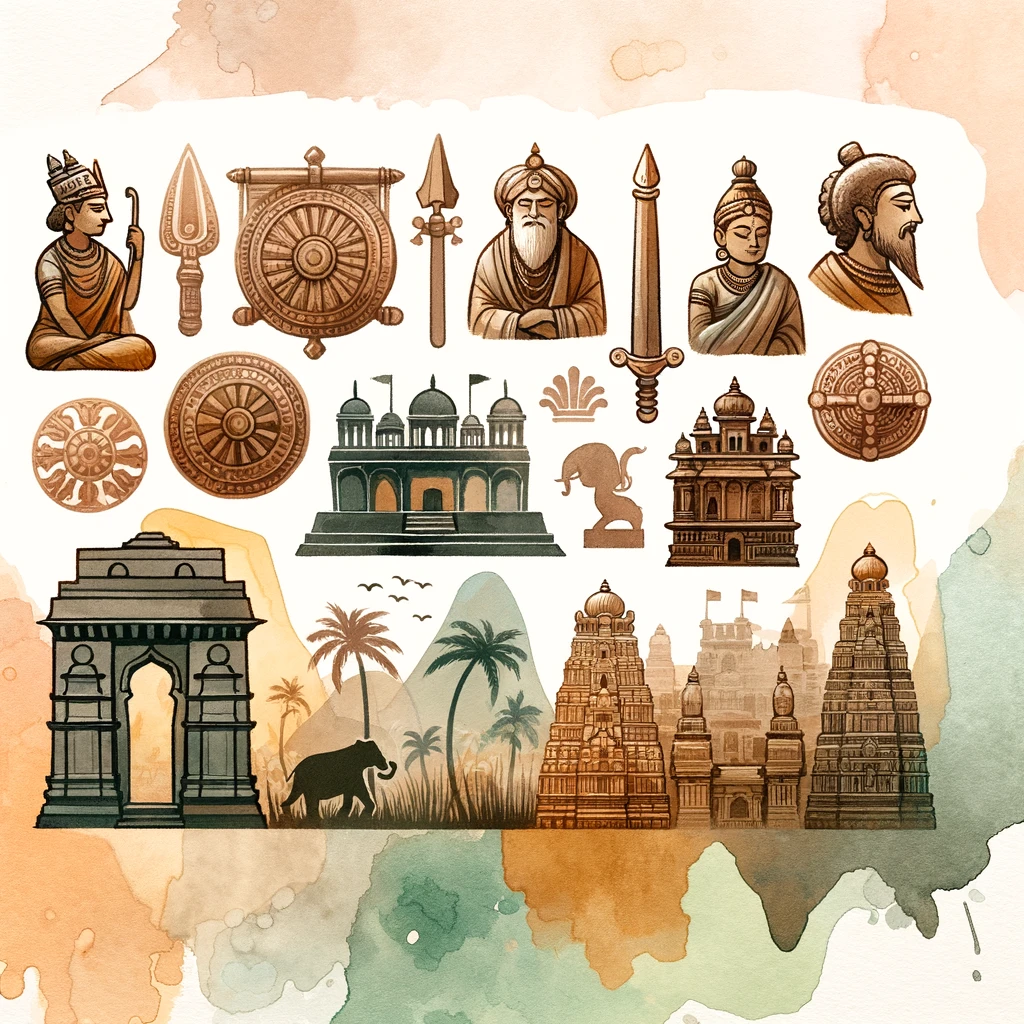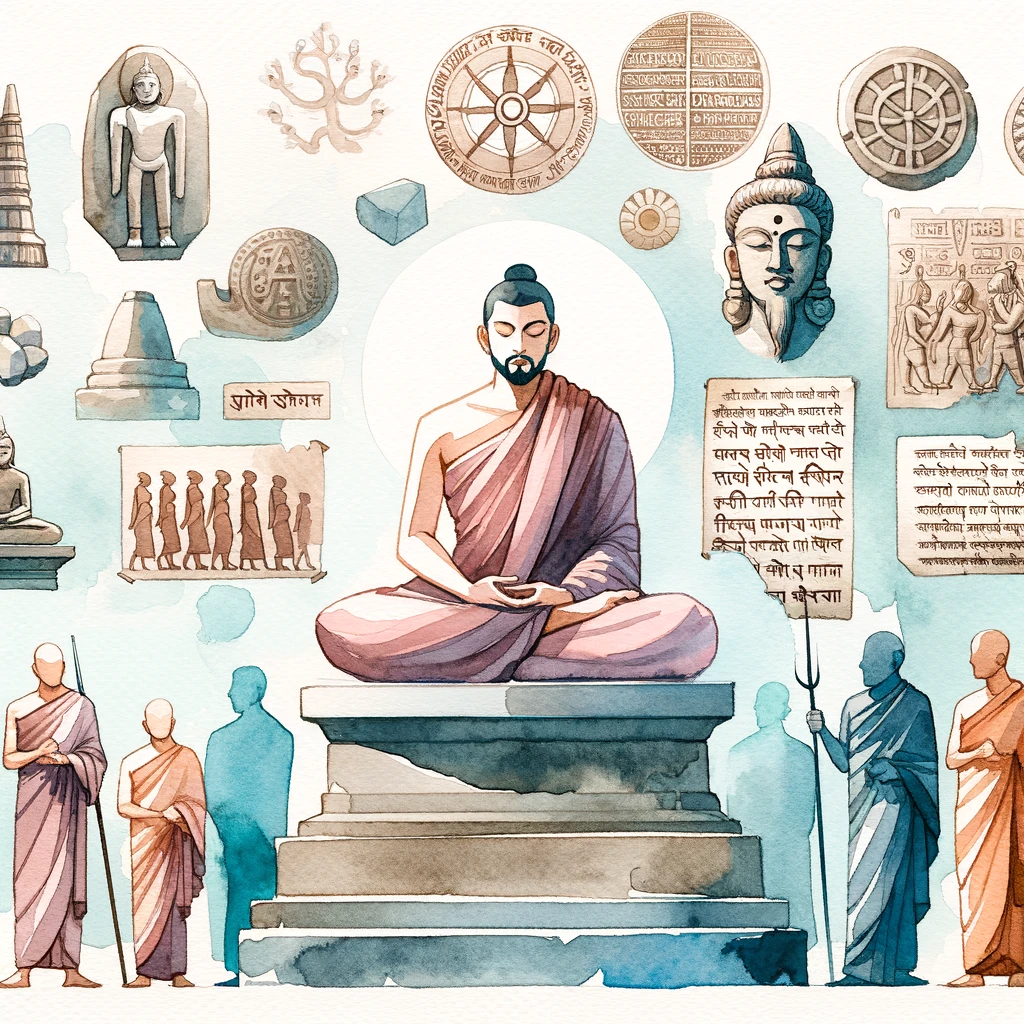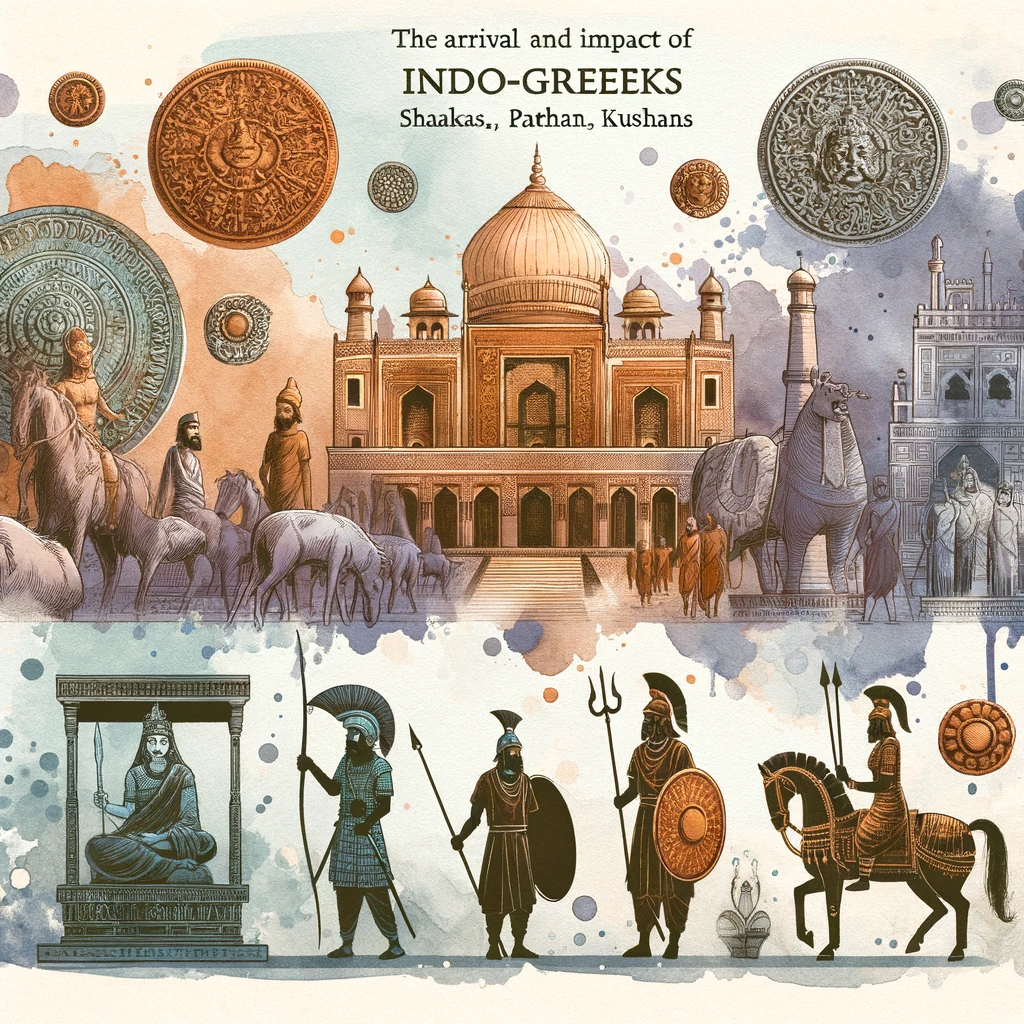The Mauryan Empire, which flourished from approximately 322 BCE to 185 BCE, is renowned for its significant contributions to art and architecture. The period marked the beginning of monumental stone architecture in India. It is characterized by grand pillars, stupas, and other forms of artistic expression. The influence of Mauryan art and architecture extended far beyond its time, laying the foundation for subsequent developments in Indian art.
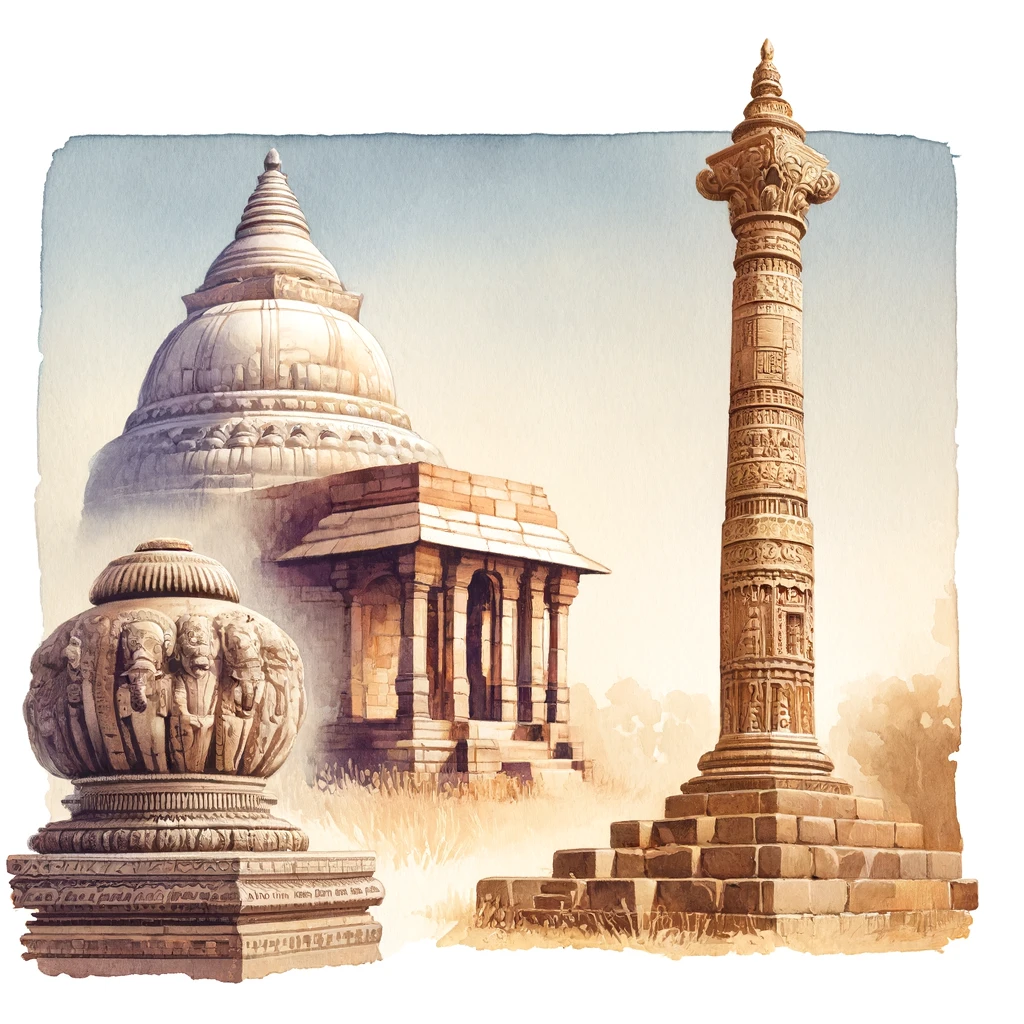
Mauryan Art
Mauryan art is well known for its polished stone sculptures, such as the famous Ashoka Pillars with their intricate carvings and inscriptions. It also includes the rock-cut architecture of the Barabar Caves, showcasing advanced craftsmanship and artistic innovation.
Pillars
Ashokan Pillars:
- The most iconic architectural achievement of the Mauryan period is the series of pillars erected by Emperor Ashoka across his empire. These pillars, known as Ashokan pillars, are renowned for their intricate carvings and inscriptions promoting Ashoka’s Dhamma (moral law).
- The pillars are typically made from polished sandstone and stand tall at about 12 to 15 meters. They were transported from quarries and erected in significant locations across the empire.
Design and Symbolism:
- Each pillar features a finely crafted capital, usually depicting animal figures such as lions, bulls, and elephants, symbolizing strength and power. The most famous of these is the Lion Capital of Sarnath, which has been adopted as the national emblem of India.
- The inscriptions on the pillars are written in Brahmi script and detail Ashoka’s edicts. They focus on ethical and moral directives, religious tolerance, and welfare measures.
Stupas
Buddhist Stupas:
Stupas are dome-shaped structures that serve as Buddhist reliquaries, enshrining relics of the Buddha or other significant figures. The Mauryan period saw the construction of numerous stupas, which became central to Buddhist worship and pilgrimage.
Great Stupa at Sanchi:
- The Great Stupa at Sanchi is one of the most significant and well-preserved stupas from the Mauryan era. Initially commissioned by Ashoka, it was later expanded and embellished.
- The stupa features a large hemispherical dome, a circumambulatory path for devotees, and intricately carved gateways (toranas). These depict scenes from the lives of the Buddha and Jataka.
Other Artistic Achievements
Rock-Cut Architecture:
The Mauryan period also witnessed the development of rock-cut architecture. Notable examples include the Barabar Caves in Bihar, which were used by the Ajivika sect and later by Buddhists. These caves exhibit highly polished interiors and precise stone carving techniques.
Terracotta and Sculptures:
Terracotta figurines and sculptures from the Mauryan period provide insights into the daily life, attire, and artistic sensibilities of the time. Common themes include human figures, animals, and mythological subjects.
Influence on Subsequent Indian Art Forms
The artistic and architectural innovations of the Mauryan period had a profound impact on the subsequent development of Indian art and architecture.
Gupta Period
The Gupta period (4th to 6th centuries CE) is often considered the golden age of classical Indian art, but its foundation was undoubtedly influenced by Mauryan precedents. The use of stone in temple construction, and elaborate carvings. The depiction of deities in a more refined form can be traced back to Mauryan innovations.
Buddhist Art
- The tradition of stupa construction continued well into later periods, with significant examples found at sites such as Amaravati and Nagarjunakonda. The stylistic elements of Mauryan stupas, particularly the use of stone and detailed carvings, influenced these later works.
- The spread of Buddhism to other parts of Asia carried the artistic principles of Mauryan art, evident in the architectural and sculptural traditions of regions such as Southeast Asia, China, and Japan.
Hindu Temple Architecture
The architectural principles developed during the Mauryan period, such as the use of pillars and rock-cut techniques, influenced the construction of early Hindu temples. The structural and artistic elements seen in the rock-cut caves of Ajanta and Ellora have their roots in the techniques perfected during the Mauryan era.
National Symbolism
The Lion Capital of Ashoka, originally from the Ashokan pillar at Sarnath, was adopted as the national emblem of India. This symbol continues to represent the country’s historical heritage and artistic excellence.
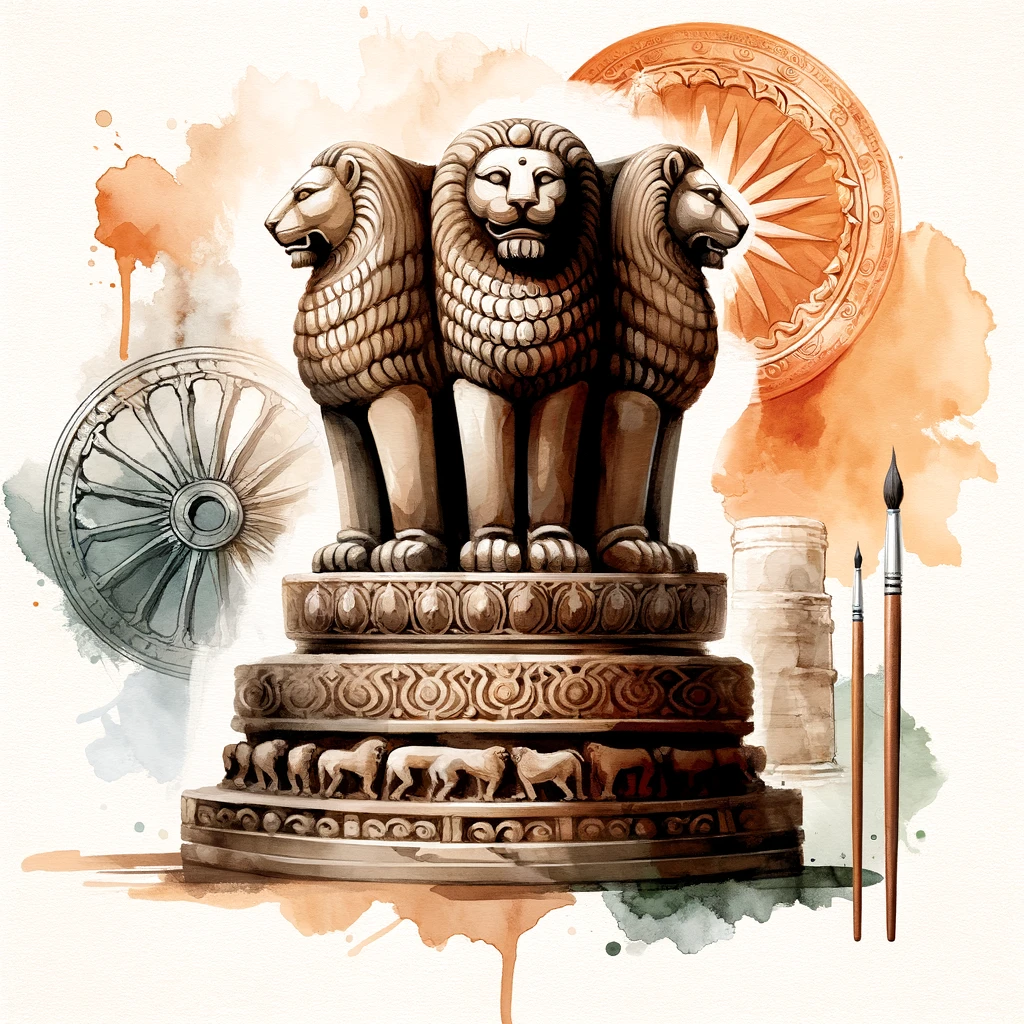
Conclusion
The art and architecture of the Mauryan Empire laid the groundwork for the rich and diverse artistic traditions of India. The grand Ashokan pillars and stupas are testaments to the empire’s architectural prowess. It emphasizes moral and spiritual values. The influence of Mauryan art extended beyond its time, shaping the artistic expressions of subsequent periods and regions. For UPSC aspirants, understanding the contributions of the Mauryan period to art and architecture. It is crucial for appreciating the historical and cultural evolution of India.

